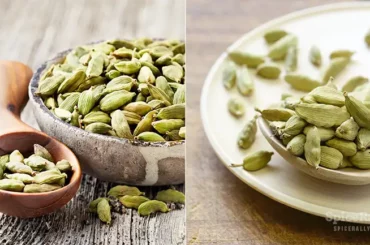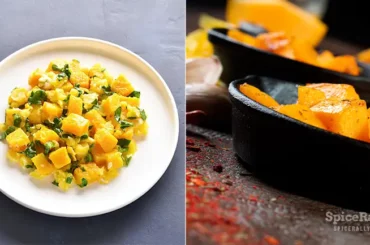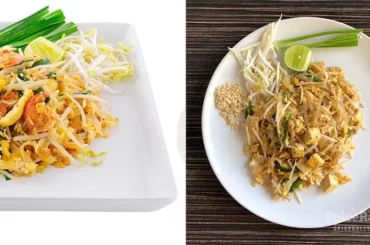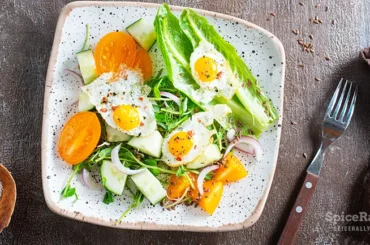Italian basil is very familiar to Western cuisine. But, when it comes to Thai basil, there are many good reasons why you have to use it. So, let’s bring you how to grow Thai basil at home easily and effectively.
Native to Southeast Asia, Thai basil is an annual tropical herb that can be effortlessly grown at home as a houseplant or outdoors. You can use seeds or cutting to grow this plant in your herb garden. It requires rich, well-drained, slightly acidic, and moist soil to thrive at its best with daily 6-8 hours of direct sun exposure.
Read on for a comprehensive guide on how to grow this flavorful and aromatic in your home garden.
How To Grow Thai Basil At Home?
If you’re already a proud owner of a thriving herb garden or someone who wishes to have one, Thai basil is a great plant to start with. This herb is very easy to grow and maintain, and you can get an excellent yield throughout the year with proper care.

Even though it is not something unfamiliar to the Asian market, you might not find it all the time and everywhere in the Western market. Therefore, growing this herb in your home is a great way to save a ton of money and make a good addition to your herb garden.
Thai basil can be grown from seeds, transplants, or cuttings. It is a fragrant, ornamental herb that grows best in fertile and well-draining soil in sunny positions, preferably in USDA zone 10 and 11, where it can get temperatures between 70˚F to 90˚F. Nevertheless, it can still grow in temperatures as low as 50˚F.
Plant Description
Thai Basil is native to Southeast Asia, though its precise origin is somewhat controversial since its cultivation dates back around 5,000 years. Many acknowledge that it originated in either India or Asia and extended to the Mediterranean via ancient spice trade routes.
This herb grows to an average of 0.3-0.45 meters in height and fans about 0.3 meters wide. The narrow, deep-green leaves have zigzagged edges and are generally smaller and sturdier than those of common sweet basil.
They also have a fresh, spicy aroma and sometimes a subtle purple tint. When the plant grows, spikes of lavender-colored to dark-violet flowers develop at the tops of the reddish-purple stems. This plant’s leaves, flowers, and stems are all edible and give an assertive flavor with spicy-sweet hints of anise and black licorice.
Thai basil is ubiquitous in Thai cuisine and many other Southeast Asian cuisines since it is more resilient than regular basil and can withstand a more extended cooking period. Hence, it’s well-suited for infusing flavor into soups, broths, and stews, from Thai green or Panang curries to traditional Vietnamese Pho.
Planting Thai Basil Indoors
Planting From The Seeds
You can purchase basil seeds from your local nursery or garden store. Or else, you can buy them online but do some research to find out which websites have the best seeds. You can often pick a packet containing over 100 seeds for an affordable price.
Choosing The Container
The container should deliver adequate drainage and can be made of plastic, clay, stone, or concrete. Look for drainage holes in the base regardless of the material.
These are crucial to provide good drainage and a steady plant. Make sure to use a tray beneath your pot to prevent water from coming out of the holes and leaking all over. You can go for a regular clay pot, a popular option, or seedling trays made of plastic.
Soil
Although Thai basil likes uniform moisture, it does not do well in water-logged soil. Use well-draining, nutrient-rich, and coarse soil to plant the seeds in. You can find well-draining potting soil online or at a garden store. If you have rich clay soil, work in some organic material to help improve drainage.
Any of these organic matters can work great:
- Compost
- Peat moss
- Well-rotted manure
- Perlite
Let’s Begin!
Fill ¾ of a container with soil. Use a spray bottle filled with water to provide the soil with a bit of moisture before filling the container up with soil so it’s not quite loaded.
If you’re using small seedling trays, try to place about three seeds in each tray. And, if you’re using a larger container, spread 5-7 seeds on top of the soil, putting them uniformly apart from one another.
Tip: Planting more than one seed in each tray is essential in case some don’t sprout.
Focus on spreading the seeds about 1 inch apart from one another. Pressing the seeds into the soil is not necessary. Place your pot in an area with maximum sunlight and an ambient temperature of at least 70 degrees.
Additional Lighting
Your Thai basil plants require a lot of sunlight when grown indoors for optimal growth and result. Most of the time, indoor areas cannot supply full-sun requirements similar to growing outside. In this case, plants should be augmented with light through grow lights.
Planting From Plant Cuttings
You must always choose a healthy, successful plant to take your cutting from. Dodge any plants with drooping stems or discolored leaves. And ignore any stems that have started to bloom. Follow these steps to obtain a healthy cutting:
- Find a stem’s uppermost leaf node, the site where a pair of leaves grows out from the stem. Snip the stem about 4 inches below the leaf node.
- Then extract all the leaves on the bottom 2 inches of the cut stem. Once you’ve done cutting, place it into a cup of water and put it somewhere that gets lots of sunlight.
- Clear glass will work best, so you can observe the stem for signs of new root growth. Switch out the water every couple of days.
- Repeat this until the roots on your cutting go about 2 inches long.
- Your cutting is now ready to be planted in a container or your garden.
Planting Thai Basil Outdoors
Thai basil doesn’t need ample space, but it requires as much sun as it can get. A piece of ground that gets full sun all day is ideal with the type of soil we mentioned on top. However, the partial shade will also work. But you should remember that the flavor decreases as sunlight exposure diminishes.
General Growing Information
Sunlight
As we have already mentioned, Thai basil is always a sun-lover. Therefore, giving your plant a minimum of six hours of direct sunlight daily is essential.
If you’re having your Thai basil indoors, rotate your pot each time you water the plant. This will ensure that the whole plant gets all of the sunlight it requires.
Watering
Thai basil favors moderate soil dampness, and it will let you know if you’re adding too much or too little water. You’re most likely over-watering if you detect the lower leaves starting to yellow.
And increase your watering if your plant grows sluggishly or the soil feels dry. As a general approach, water your indoor Thai basil about once weekly. Ensure to put the water into the soil rather than spraying the leaves.
Tip: Use a self-watering planter. This way, your Thai basil can take up just the right amount of water to stay healthy and steady.
Rainfall should be enough to keep outdoor plants healthy. But if your area undergoes a dry period, make sure to water your plants every few days.
Pruning
A well-maintained Thai basil plant will grow soon and be healthy! And you’ll need to keep it pruned for maximum yield and shape.
As soon as your plant reaches around 6 to 8 inches tall, initiating a regular pruning routine is safe. You should never trim more than 1/3 of the plant at any pruning session. Begin from the base of the plant and move up to the third set of leaves.
Anything beyond this is okay to prune. If you see a stem beginning to blossom, prune it and the leaves in the surrounding area. You can make an uncluttered cut through the stem using a hand pruner or sharp scissors. Repeat the technique for the entire plant.
Harvesting
The harvesting method is very similar to the pruning process. The main difference is the amount you extract at any one time. Once you are ready to harvest some leaves, trim them off at the stem. Repeat this cycle until you have what you need.
Taking Care Of Your Basil Plant
Snails and slugs can attack young plants. Therefore, you can protect them using a snail and slug trap or organic snail pellets. Avoid overhead watering, specifically during the day.
If aphids become a concern, spray with a suitable organic insecticide to prevent further deterioration. After applying fertilizer, postpone harvesting for a few days, rinse the leaves, and steams well before using.
Improve Your Herb Garden With An Enchanting Thai Basil Plant!
Thai basil is a precious little plant that can add tremendous value to your herb garden while giving excellent quality to your meals. Since this herb could be scarce in the Western market, growing your own can be the best option for choosing fresh and fragrant content. So, as you see, having your own Thai basil plant is relatively easy if you follow the proper guidelines and take good care of it!




